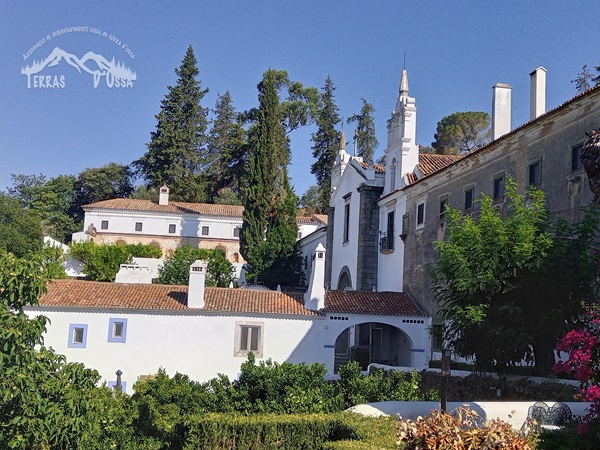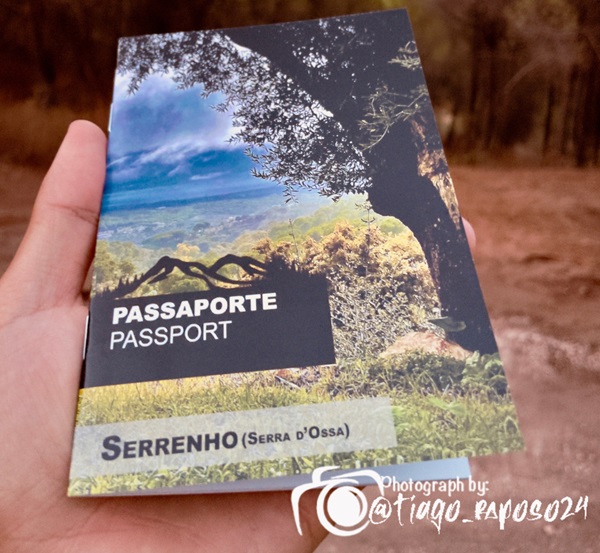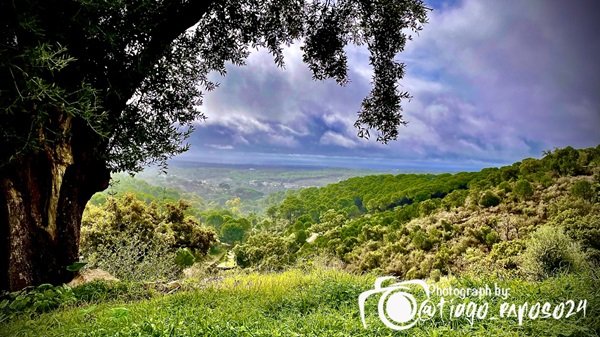We are all aware of the health benefits of going out into nature and immersing yourself in ‘blues and greens’. Portugal as a country is covered by 39% of forested areas, so whether you are a tree-hugger, forest bather, nature-lover, hiker or ornithologist – exploring the Serra d’ossa definitely improves your physical and mental wellbeing too.
So what exactly does it have to offer:
Passadiço da Serra d’Ossa
The first known inhabitants of the Serra d’ossa were hermit monks, thought to have made their home here in the IV century, and there are still traces of them to be found all over this mountainous region.
Made up of 1,5km, the wooden walkway (or Passadiço) at Aldeia de Serra, winds its way first through low lying grassy areas following alongside a spring and then passes through the ancient Monk’s Garden and eventually climbs up to a delightful little chapel at the top. From here you look back down over the village, and on the steep hills behind the church you will find a monk’s dwelling and a ‘mina de agua’ or complex of fresh water springs.
Convent of São Paulo


The convent, which dates back to the 1182, is now a privately owned chic hotel, with luxury suites, swimming pool and a fine dining restaurant. Much of the surrounding forest is protected and maintained by the hotel, and visitors to the hotel are able to view an important collection of 18th century azulejos (hand painted Portuguese tiles) and a chapel within. The Convento de São Paulo was originally built to house a silent order of monks and the buildings today preserve many original features.
Sacred places
Those who are in tune with their spiritual side will not be disappointed by their visit either. As well as several Neolithic antas (dolmens or burial chambers), and hidden monk’s caves that date back to the earliest of Christian times, there is a sacred pagan place of worship that sits on the banks of the Lucefecit river. Reached by a wooden bridge, the more adventurous can climb up to the top of the Rocha da Mina and make their offering to the pagan god Endovélico. There are also some ongoing iron-age excavations and a nearby arched bridge from the medieval era: Ponte de Ouro. Don’t forget to dip your feet in the flowing Lucefecit (named after the god of light) to bring you good luck for the coming year.
Natural wonders
At one time the Serra d’Ossa spring water supplied the nearby town of Redondo with all its water needs and the mountains are dotted with natural springs that burst from the earth, as well as traces of man’s engineering works employed to harness the natural water. This includes tunnels from the 1800s, underground chambers and flowing streams and cascades. These of course attract no end of wildlife including badgers, foxes, fish, frogs and toads, newts, scorpions and snakes, as well as all manner of birds, bats and insects.
Passport to the Serra


Terras d’ossa is an organization made up of local people with a shared love for the forest, who work together to protect and maintain the biodiversity of the area. They do this through conservation projects, clearing the springs of undergrowth, planting trees, collecting litter, setting bird boxes and also initiatives to educate and inform both adults and school children about the forest and its flora and fauna.
Regular hikes to the differing areas of the Serra are organized as well as other events and workshops. One special initiative is the Passport to the Serra d’ossa, in which visitors can find information about the restaurants, accommodation, artisans and other businesses in the area, as well as a map.
So if you do find yourself exploring this part of the Alentejo, check out the Terras d’ossa website and see how you can participate in preserving this enchanting Serra, or contact them to arrange a guided visit during your stay



